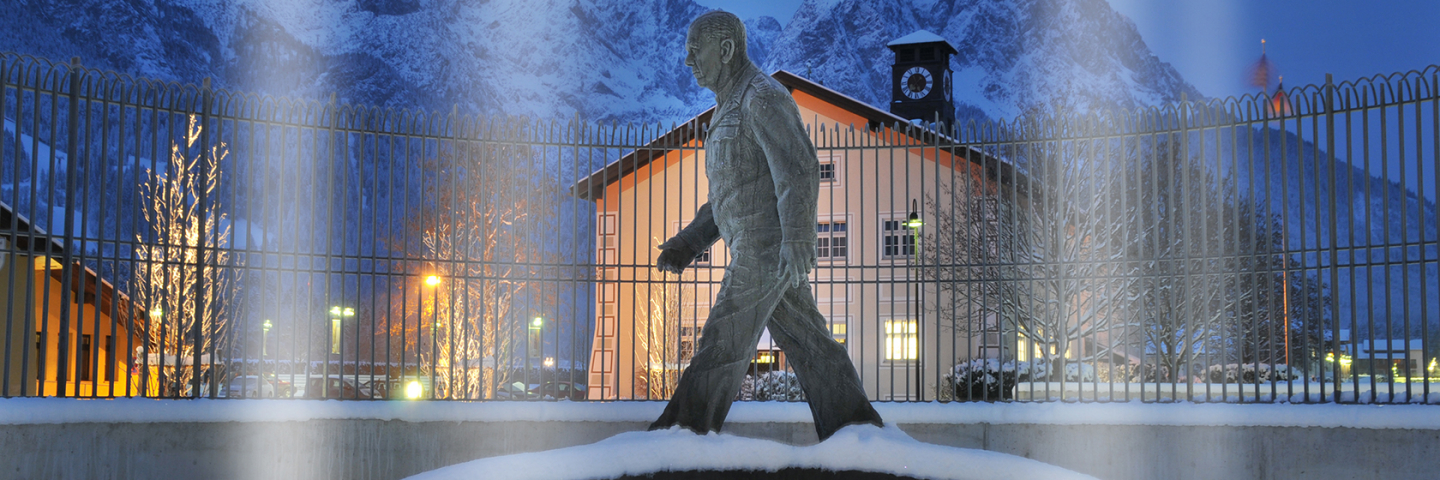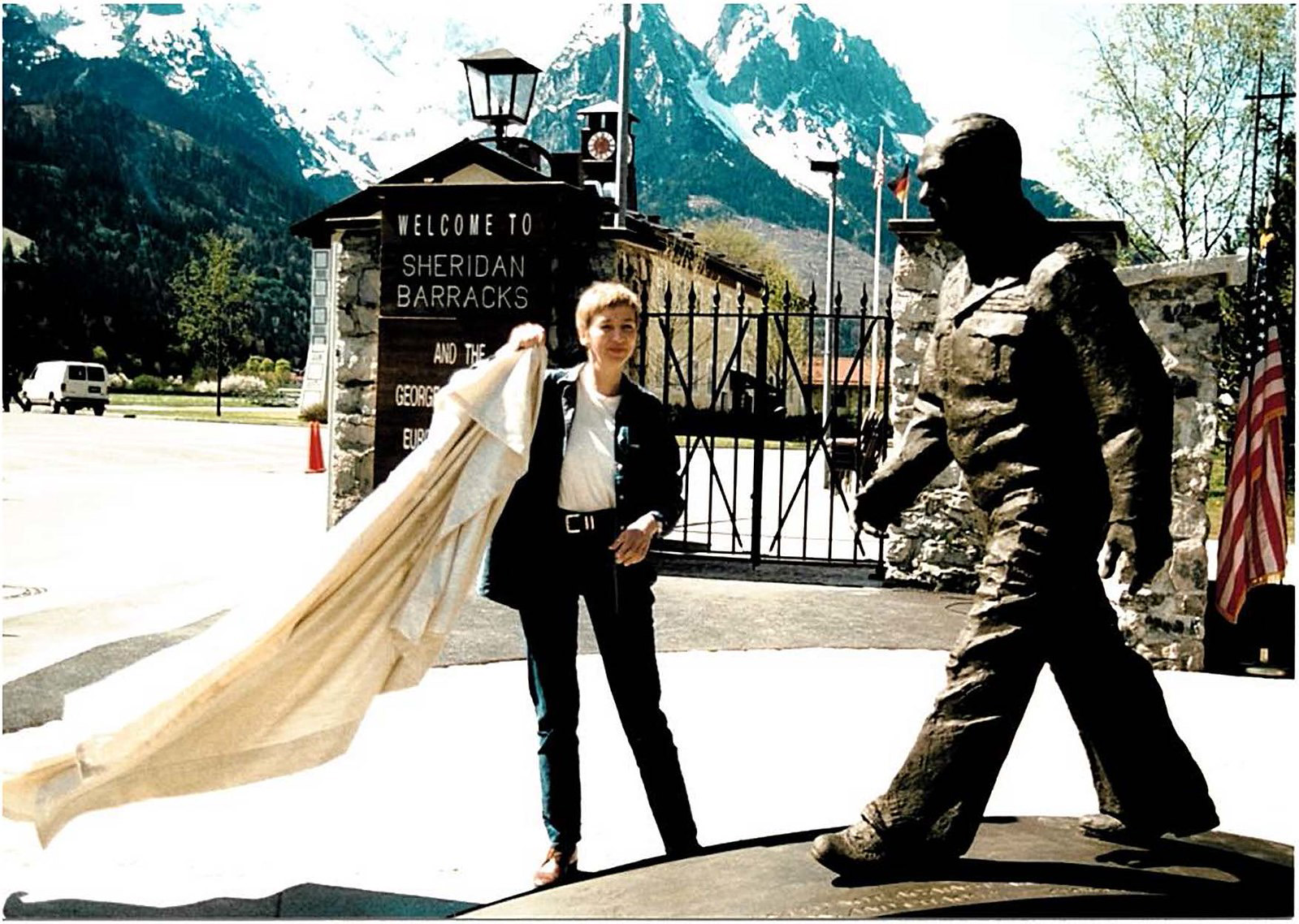
Marshall Center’s Bronze Statue of its Namesake Turns 21
By Christine June
Public Affairs Office
George C. Marshall European Center for Security Studies
GARMISCH-PARTENKIRCHEN, Germany (April 30, 2019) – If statues could drink a beer, the bronze sculpture of U.S. Army Gen. George C. Marshall in front of the George C. Marshall European Center for Security Studies here, could do so legally in the United States.
The statue, which shows General Marshall walking east to greet new friends and allies, turns 21 years old April 30.
“Marshall is striding forward, crossing the bridge of cooperation over the river of division and distrust, toward a future of genuine cooperation among nations for the common peace for all,” said retired U.S. Army Lt. Gen. Keith W. Dayton, Marshall Center director.
“The George C. Marshall statue is a true embodiment of the more than 25 years of cooperation between Germany and the United States that is the Marshall Center,” he added.
First Public Statue of Marshall in Europe
The figure that is slightly larger-than-life is the first known public statue of Marshall erected in Europe, according to historical documents found at the Marshall Center’s Research Library.
The World War II general masterminded the European Recovery Program or Marshall Plan that helped Europe recover economically after the war.
It was originally placed in front of the main entrance of the Marshall Center, where it symbolically faced east. In 2009, a wall was built where the gate once stood, and the statue of Marshall was moved slightly, still facing east but now, outside the wall of the Marshall Center. The area was rededicated in Oct. 2009.
This work of art was sponsored by the Marshall Center, the Friends of the Marshall Center and the City of Garmisch-Partenkirchen.
Bavarian Artist Christiane Horn (1957-2001) of Wartenberg, Germany, sculptured the statue, which was unveiled during a dedication ceremony April 30, 1998 at the Marshall Center.
The Honorable Vernon Walter, former U.S. ambassador to Germany, was among the keynote speakers during the original dedication ceremony. In his speech, he remembered his days as an aide to Gen. Marshall before a crowd of 500.
Other speakers including Wilhelm Rehm, the vice mayor of Garmisch-Partenkirchen, and Maj. Gen. Winfried Dunkel, chief of the German Armed Services Office.

George Catlett Marshall
George Catlett Marshall was born Dec. 31, 1880 in Uniontown, Pa., and died Oct. 16, 1959 in Washington, D.C. He was the General of the Army and U.S. Army Chief of Staff during World War II (1939–45) and later U.S. Secretary of State (1947–49) and of Defense (1950–51).
The European Recovery Program he proposed in 1947 became known as the Marshall Plan. He received the Nobel Prize for Peace in 1953, the only career officer in the U.S. Army to ever receive this honor.
George C. Marshall European Center for Security Studies
The Marshall Center will also have a birthday this year. It will turn 26 years old on June 5, which is also the date in 1947 of the speech at Harvard University where Marshall outlined the American proposal. The European Recovery Program, as it was formally known, became known as the Marshall Plan.
The Marshall Center is a German-American security partnership that has produced generations of global security professionals schooled in American and German security policies. It was established as an official German-American partnership and government educational institution, following the end of the cold war.
With more than 13,300 alumni from 155 nations, the Marshall Center enjoys a global reputation as an institution that addresses national security challenges and advances the professional development of its participants. Many Marshall Center alumni have risen to the very highest levels within their respective governments.
At its conception, the Marshall Center’s mission was to educate government members of former communist countries about democratic state building, good governance, and the importance of rule of law and democratic institutions. While primarily focused on Europe at the beginning, it now conducts transnational programs with participants from across the globe.
Note: The Marshall Center Research Library assisted with the historical information and photographs for this story.